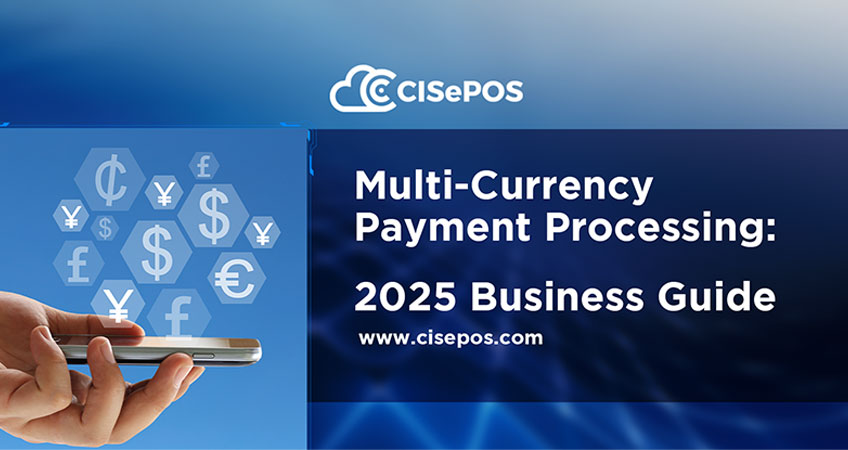
Multi-currency payment processing allows your customers to pay in their preferred money type both online and in person. It gives them flexibility, builds trust, and helps you reach new markets that might otherwise be out of reach.
Global trade could reach around $320 trillion by 2032, but many businesses still work only with local money transactions. That limits their potential to attract international buyers.
With a reliable multi-currency payment solution, you can accept payments from anywhere, offer real-time currency conversion, and create a smooth experience for your customers. This 2025 guide explains how it works, its benefits, and how to choose the right system for your business.
What is Multi-Currency Payment Processing
Multi-currency payment processing means accepting and managing transactions in different types of money. A customer in Pakistan can pay in PKR while a customer in China pays in yuan, and both payments reach your business account in your base currency.
This setup helps avoid confusion over exchange rates and makes it easier for your customers to understand the exact amount they are paying. Businesses that rely on global sales, e-commerce, or international suppliers often use multi-currency payment systems to simplify accounting and expand into new regions.
How Multi-Currency Payment Systems Work
When a customer makes a purchase, they choose the payment type they want to use. The payment processor then converts the amount using real-time currency conversion and sends the funds to your multi-currency merchant account.
Here is how it usually works:
- The customer selects a product or service.
- They choose their local money at checkout.
- The processor converts the amount using the latest exchange rate.
- The customer authorizes the payment through their preferred method.
- You receive the funds in your merchant account, in your preferred money type.
The process is quick and transparent. Both you and your customer know the exact value being exchanged, which builds confidence and trust.
Benefits of Multi-Currency Payment Processing
1. Easier Global Expansion
Accepting different money types allows your business to reach more customers. You can sell globally without worrying about complex conversions or local banking setups.
2. Better Customer Experience
Customers prefer paying in their own currency. When prices are clear and local, they are more likely to complete their purchase. This reduces cart abandonment and boosts conversions, especially in e-commerce.
3. Improved Cash Flow
A multi-currency merchant account helps you manage funds in several currencies. You can hold balances in foreign payments and convert them when the exchange rate is in your favor. This makes your financial management more flexible and efficient.
4. Competitive Pricing
With a good solution, you can price your products according to local markets. Adjusting prices by location helps you stay competitive while maintaining healthy profit margins.
5. Simplified Accounting
Businesses that use multi-currency systems can track payments more easily. Since conversions happen automatically, reconciliation becomes faster, and you can focus on running your business instead of chasing numbers.
Challenges and How to Handle Them
Exchange Rate Fluctuations
Money values change often, which can affect your profit margins. To manage this, monitor exchange trends and plan conversions when rates are favorable. Some systems also offer fixed rates for a specific period to help control costs.
Transaction Fees
Processing payments in multiple currencies may include extra fees. Choose providers that offer transparent pricing and low conversion charges. Regularly review your provider’s fee structure to ensure you get the best deal.
Compliance and Regulation
International payments must follow strict financial regulations. Work with trusted payment providers who stay updated with global and local rules. This helps protect your business and keeps you compliant.
Technical Integration
Connecting a new system to your existing POS or e-commerce platform can take time. Look for processors that provide easy API integration so your team can manage payments without disrupting daily operations.
Security Risks
Handling different payment types also means managing more transaction data. Pick a processor that uses encryption, tokenization, and fraud detection tools. Training your staff on safe payment practices also reduces risk.
How to Choose the Right Multi-Currency Payment Solution
When selecting, focus on these key points:
- Global coverage: Make sure it supports the countries and payment types you target.
- Real time currency conversion: Look for systems that offer live exchange rates with minimal markup.
- Local payment methods: Support for local credit cards and digital wallets increases conversion rates.
- Transparent fees: Avoid hidden charges that can eat into your profits.
- Strong customer support: Choose a provider that offers 24/7 assistance across time zones.
By comparing providers and reading reviews, you can find a platform that fits your goals and your budget.
Multi-Currency Payments vs Cross-Border Payments
Although the terms are often used together, there is a difference. Cross-border payment solutions handle payments between two different countries. Multi-currency payment processing, on the other hand, allows payments in various forms of money even within the same country.
For example, a tourist paying in euros at a U.S. hotel uses this system, while a company in the U.S. paying a supplier in the UK makes a cross-border payment. Both systems make global business easier, but work in slightly different ways.
Final Thoughts
In a world where businesses sell and buy across borders, this payment processing is no longer optional. Moreover, it helps you attract more customers, simplify operations, and strengthen your global presence.
By investing in the right solution, you create a smoother, smarter, and more profitable path for your business in 2025 and beyond.


